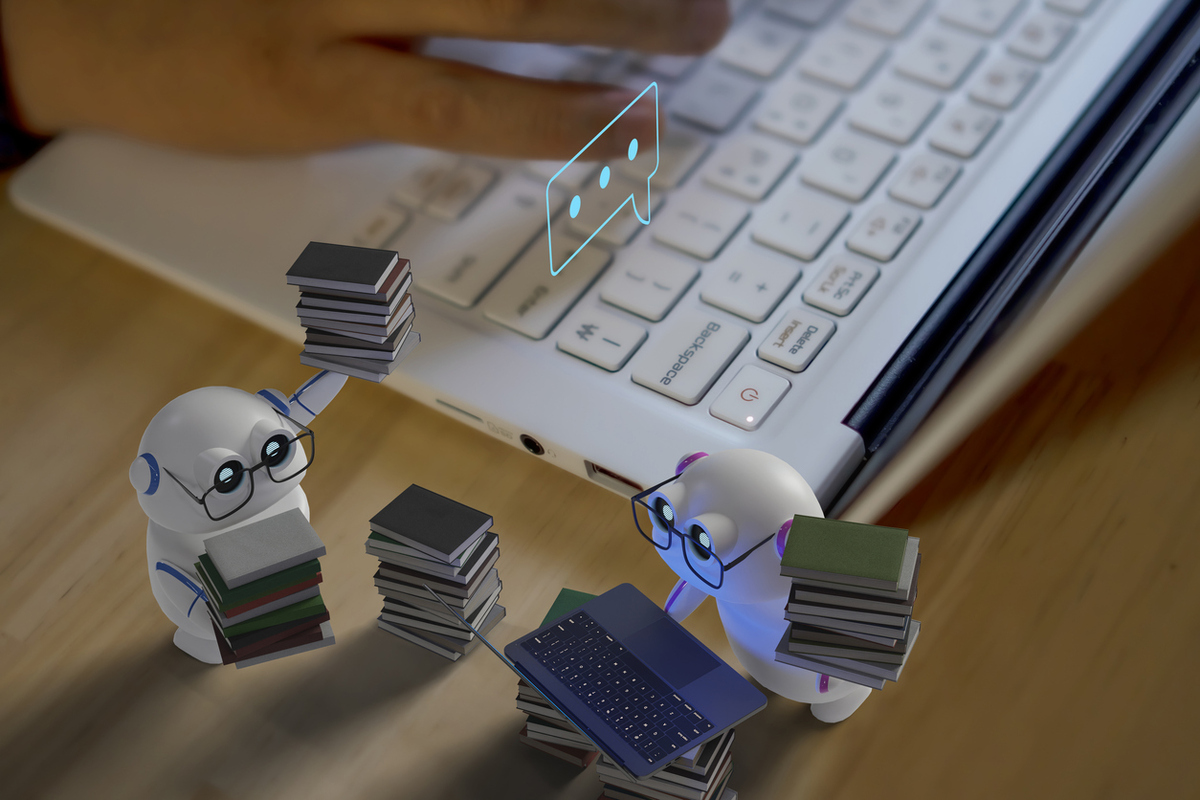Taking the machine out of the human
How gen AI is expected to impact productivity via employee satisfaction

No matter how thrilling and creative a job is, or how much variety it has, there will always be aspects of it that are on the more humdrum end of the spectrum.
This applies even to high-adrenaline jobs such as stock trading, where tracking stocks hour after hour, day after day can trigger tedium. Also, the more exciting tasks of a junior job can constitute the mundane element of a senior one.
To be entrusted with writing an annual report can feel like a privilege in a lower-level job but regarded as a drag by someone in the C-suite, which takes away precious time from other, more responsible or strategic activities.
Even journalism – which, in its most impactful forms, can topple government ministers or start a chain reaction of redressing decade-old injustices – has its own time-consuming routines. And a growing number of news outlets have admitted to their journalists employing gen AI to research topics or do fact-checking.
(Interestingly, although gen AI has a tendency to make up answers where there are gaps in its training data, it can also be good at cross-checking the verity of the sources referenced in an article.)
The employee engagement side of the productivity coin
GenAI’s most compelling business case is how it improves productivity. Even those carrying out a task with its help are often themselves flabbergasted by how much less time the same task takes them when assisted by ChatGPT.
However, this disruptive new technology can boost productivity not only by accelerating task execution but also via employee engagement.
Research by the Boston Consulting Group (BCG) shows that workers who find their job fulfilling are half as likely to look for a new one than their less content colleagues, and that the amount of “toil” – responsibilities at work that one doesn’t like – plays a crucial role in productive an employee is.
Although toil is hard to quantify, BCG research suggests that those who perceive more than four hours of their weekly jobs as toil will start to have thoughts about leaving, while at least ten hours of activities perceived as purposeful are enough for employees to refrain from job seeking.
As new use-cases for gen AI at the workplace appear, organisations may expect a significant drop in the amount of monotonous, repetitive tasks and greater employee satisfaction as a result.
What distinguishes the current wave of automation from rule-based robotic process automation is that today’s much more sophisticated technology primarily affects highly skilled jobs requiring advanced degrees.
It’s still hard to predict, though, the extent and pace of the change we’re to witness at workplaces of the near future. A 2023 study that investigated the potential impact of LLM-powered software on the US market, for example, found that “80 per cent of the US workforce could have at least 10 per cent of their work tasks affected by the introduction of LLMs, while approximately 19 per cent of workers may see at least 50 per cent of their tasks impacted.”
These figures, however, should come with the caveat that the uptake of gen AI in the workplace and the efficiencies it can achieve are highly dependent on businesses’ willingness and ability to invest in it.
The low-hanging fruits
The first gen AI deployments tend to harness two areas where the technology excels.
Firstly, generative AI can process and analyse huge amounts of data thanks to the powerful computational infrastructure that large language models run on. For example, in the past decade, the surge in the number of frameworks regulating data privacy and security, ESG and, increasingly, the ethical use of AI, means that every function can leverage gen AI to check whether a business process or practice is compliant.
In addition to compliance checks, HR, for example, can also streamline its operations by using a gen AI assistant to interrogate employment law under different jurisdictions to ensure their employees’ contracts are up to scratch depending on where they work.
In a similar manner, risk management teams can leverage gen AI to bolster their efficiency when establishing what risks a certain deal or a change in business strategy may involve. Gen AI-powered enterprise solutions with strong security capabilities can help legal and tax professionals perform similar tasks too.
The other, somewhat controversial, gen AI superpower, which has the potential to eliminate mundane tasks from white collar workloads, is its ability to generate new content – whether it’s text, pictures, video or code.
Even in journalism, where writing is a core task, some media outlets have admitted to using gen AI to write news items that present facts such as sports scores or share prices embedded in a formulaic text – needless to say, with a human in the loop to oversee things.
Indeed, human review is an integral and self-evident component of content generation in other sectors too. The current status of ChatGPT in this area is that of a virtual assistant, performing the kind of tasks often delegated to an intern. These could include writing up meetings, drafting documents and marketing emails, generating product descriptions and posting branded messages on social media.
Functions such as marketing are also harnessing gen AI’s more advanced capabilities, using it not only for text but also for picture, video and voice generation.
The possibilities seem to be endless. And surveys suggest that more adventurous employees are experimenting with gen AI even at workplaces without a programme or a policy for its use – which has given rise to “shadow AI”.
As Mert Demirer, an assistant professor of economics at MIT Sloan, has pointed out, there are two scenarios regarding how an uptake in gen AI-powered enterprise solutions may play out in the future. The first is that employees get their work done more quickly, and thus have more time for high-value tasks – and, consequently, get more inspired and fulfilled by their work. The second is that companies get the same amount of work done by half the number of workers – which may affect some employees’ satisfaction in a radically different manner.
Either way, it looks like gen AI is something businesses – and employees – will have to learn to get on with in the long term.
Related Articles
Most Viewed
Winston House, 3rd Floor, Units 306-309, 2-4 Dollis Park, London, N3 1HF
23-29 Hendon Lane, London, N3 1RT
020 8349 4363
© 2025, Lyonsdown Limited. Business Reporter® is a registered trademark of Lyonsdown Ltd. VAT registration number: 830519543






